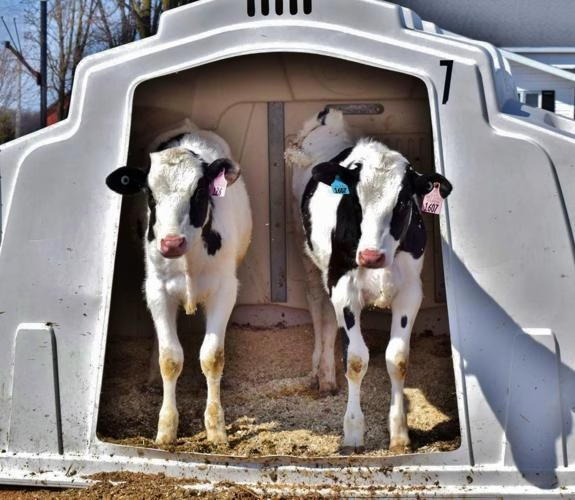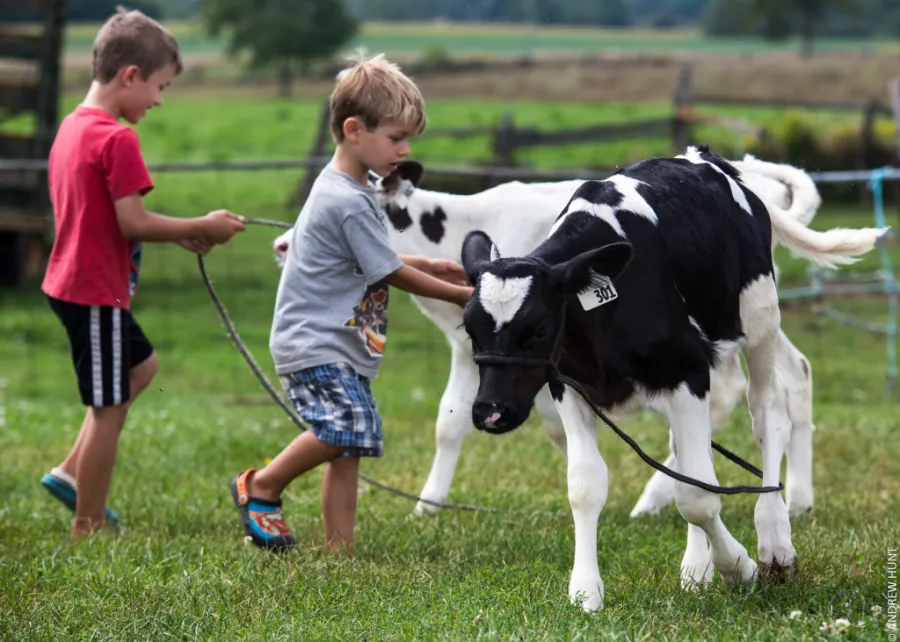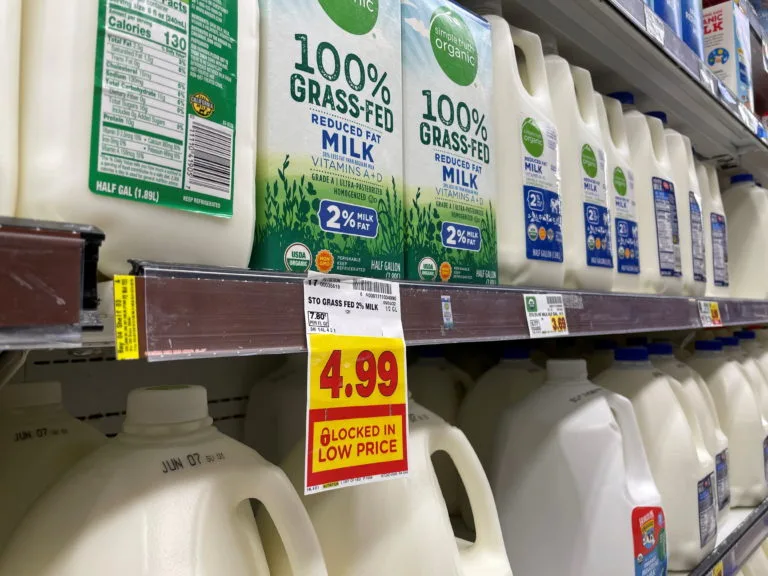Keep up with dairy farming trends: higher cheese prices, lower butter costs, and shifts in the global market. How will these changes affect your farm?
Summary: Are you keeping up with the ever-fluctuating dairy market? If you blink, you might miss a crucial change affecting your business. From recent USDA reports on wholesale dairy prices to global trends, we dive deep into what’s trending in the dairy industry. We’ll explore how weather conditions and herd management are influencing milk production. Plus, understand the impact of lower culling rates. The dairy market is experiencing fluctuations, with Cheddar cheese prices rising and butter prices falling. The USDA reports a rise in Cheddar cheese blocks by 0.48 cents per pound and 500-pound barrels by 3.38 cents per pound. NDM prices increased by 1.97 cents per pound and dry whey by 2.93 cents per pound. Export prices for most dairy products have fallen in Oceania and Western Europe. Milk production has varied, with New Zealand producing less due to unfavorable weather, while Australia and the E.U. increased output. U.S. dairy prices have generally been less competitive globally, but domestic Cheddar prices remain steady with international rates. Milk output for the top five exporters is forecasted to be 636.3 billion pounds in 2024, down by 1.4 billion pounds from last year.
- USDA reports show an increase in wholesale prices for most dairy products from mid-July to early August.
- Cheddar cheese prices rose by 0.48 cents for blocks and 3.38 cents for 500-pound barrels per pound.
- NDM and dry whey prices increased by 1.97 and 2.93 cents per pound, respectively.
- Butter prices experienced a decline of 3.03 cents per pound.
- Spot prices for dairy products at the CME varied, highlighting the overall market fluctuation.
- Internationally, Oceania and Western Europe saw declining export prices for most dairy commodities from June to July.
- New Zealand’s milk production is projected to decrease due to adverse weather conditions, while Australia and the EU are anticipated to increase production.
- US dairy exports declined in June relative to May, partially due to less competitive pricing.
- The farm milk margin above feed costs improved in June, driven by lower feed prices and higher all-milk prices.
- US butter has gained competitiveness in the international market, unlike other dairy products.
- The all-milk price for 2024 is forecasted to be $22.30 per cwt, with a similar increase predicted for 2025.

As a dairy farmer, your knowledge of current market trends and pricing is your power. The recent rise in wholesale prices for Cheddar cheese blocks and barrels and the sharp fall in butter prices are significant shifts. Understanding these changes and how they affect your dairy business empowers you to navigate this pricing environment efficiently.
Keeping Tabs on Shifting Dairy Prices: How to Navigate the Landscape
Are you keeping up with the current market pricing for your dairy products? According to the most recent USDA National Dairy Products Sales Report (NDPSR), we’ve witnessed some intriguing trends. The price of 40-pound blocks of Cheddar cheese rose by 0.48 cents per pound, while 500-pound barrels increased by 3.38 cents per pound. Nonfat dry milk (NDM) prices rose by 1.97 cents per pound, with dry whey following closely after at 2.93 cents per pound. In contrast, butter prices fell by 3.03 cents per pound.
Spot prices on the Chicago Mercantile Exchange (CME) reflect a similar pattern. For the week ending August 9, 500-pound barrels of Cheddar cheese were $1.9470 per pound, while 40-pound blocks were $1.9220 per pound. Butter spot prices were $3.1010 per pound, NDM $1.2225 per pound, and dry whey $0.5865 per pound.
These pricing changes will indeed affect your company plans. However, they also present opportunities. Have you thought about how to deal with these market fluctuations and potentially turn them to your advantage?
Global Dairy Market Watch: The Rising and Falling Trends You Need to Know
Regarding the global dairy market, export prices for most dairy goods have fallen in Oceania and Western Europe. According to the USDA Dairy Market News (DMN), the declines varied from 0.1 cents per pound for dry whey in Western Europe to more considerable reductions of almost 4 cents per pound for skim milk powder in Oceania.
Milk production has varied among areas this year, presenting both challenges and opportunities. New Zealand has produced less milk than the previous year, possibly due to continued issues such as unfavorable weather conditions. In contrast, Australia and the European Union have reported increased milk output, demonstrating the industry’s resilience and adaptability.
Regarding competitiveness, U.S. dairy pricing has historically been less beneficial on a global scale. U.S. U.S. pricing for nonfat dry milk (NDM) and dry whey is much higher than that of Oceania and Western Europe. However, domestic Cheddar cheese costs have remained consistent with overseas equivalents. It is noteworthy that U.S. U.S. butter prices have grown more competitive, perhaps opening up new export opportunities.
Weather Woes and Herd Trends: What’s Impacting Your Milk Production?
According to the USDA National Agricultural Statistics Service (NASS) Milk Production report issued in July, the milking cow herd was assessed at 9.335 million in June, down 62,000 from June 2023 but up 2,000 from the previous month. This modest month-over-month increase may seem optimistic. Still, the more considerable year-over-year fall demonstrates a continued pattern of herd reduction.
In June, milk output per cow averaged 2,010 pounds, representing a 0.3 percent decrease from the previous year. This decline is primarily due to hot weather, which has a direct influence on cow comfort and, as a result, output. Elevated temperatures cause more heat stress, which may dramatically reduce milk yield.
Overall, June milk production fell by 1 percent compared to 2023. This drop results from a smaller milking herd, lower milk output per cow, and higher heat stress. Furthermore, overall milk output per day has decreased by around 0.90 percent year to date compared to the first half of 2023.
Interestingly, milk fat production has increased by 1.7 percent despite lower total milk output. This is attributable, in part, to a 2.2% increase in the average fat test, which indicates more excellent milk fat contents per cow. The tendency toward increased fat, protein, and other solids (such as lactose and minerals) implies that less milk is needed to produce dairy products.
Several causes have influenced these developments. On the one hand, favorable feed prices encourage farmers to keep older cows in the productive cycle for extended periods, reducing culling rates. On the other side, feed costs influence economic margins, as shown by the Dairy Margin Coverage (DMC) program. In June, the farm milk margin over feed expenses was $11.66 per hundredweight (cwt). This amount was $8.01, more significant than June 2023 due to decreased feed costs and higher all-milk pricing.
Striking a Balance: Understanding the Fluctuations in Dairy Trade
In June, dairy exports were 1,027 million pounds on a milk-fat milk-equivalent basis, a 39 million-pound decrease from May but an increase of 133 million pounds over June 2023. On a skim-solids milk-equivalent basis, June exports were 4,114 million pounds, 31 million less than May and 110 million less than June 2023. Exports of American cheese, other-than-American cheese, and dry whey fell in June compared to May. In the second quarter, milk-fat milk-equivalent exports reached 3,125 million pounds, up 12.5% from the previous quarter and 16.6% year on year. Exports in the second quarter were 12,412 million pounds on a skim-solids milk-equivalent basis, up slightly from the first quarter but down 3.3 percent from the previous year.
The import statistics for June were likewise remarkable. In June, imports reached 713 million pounds on a milk-fat basis, 51 million less than in May but 243 million more than in June 2023. On a skim-solids basis, June imports were 562 million pounds, 28 million more than May and 78 million more than June 2023. According to quarterly statistics, second-quarter imports were 2,228 million pounds on a milk-fat milk-equivalent basis, up 11.6 percent from the first quarter and an astonishing 27.2 percent higher than the previous year. Second-quarter imports were 1,719 million pounds on a skim-solids basis, up 3.0 percent from the first quarter and 23.8 percent from the prior year’s second quarter.
What is causing these trends? Price competition is significant. The absence of a pricing advantage for U.S. dairy products in overseas markets has resulted in lower export quantities. Furthermore, recent statistics show robust domestic demand, which decreases exports. Simultaneously, growing imports reflect the strong demand for dairy in the United States, where higher predicted costs drive purchasers to explore outside domestic boundaries. Finally, better macroeconomic circumstances in major overseas markets such as South Korea, Mexico, and the Philippines provide a favorable environment for a possible resurgence in U.S. exports if pricing competitiveness improves.
Deciphering Domestic Dynamics: Consumption and Stock Insights for Q2 2024
The dairy market in the United States is undergoing subtle shifts in domestic consumption. Domestic milk-fat consumption was somewhat lower in the second quarter of 2024 than at the same time in 2023, although skim-solids consumption increased slightly. Other-than-American cheese, butter, and dry whey consumption increased. In contrast, American-type cheese and dry skim milk products declined in popularity.
Ending stocks provides an insight into the supply side. As of June, ending milk-fat stockpiles were down 566 million pounds from the previous year, totaling 17,933 million. On a skim-solids basis, stockpiles were at 10,966 million pounds, 1,433 million pounds lower than in June 2023. While supply levels for other essential dairy products fell year on year, butter remained higher.
Several things affect these dynamics. Milk output fluctuates significantly according to herd size and yield per cow. Market circumstances such as foreign demand and export competitiveness directly influence local consumption and stock levels. Lower culling rates indicate that farmers are keeping cows longer, which impacts both output and stock trends along with higher milk margins.
Shaping the Future: Global Dairy Production Projections for 2024
On July 23, the USDA Foreign Agricultural Service (FAS) released its biennial study Dairy: World Markets and Trade, which provides a detailed analysis of worldwide trade, production, consumption, and stock levels. Updating this analysis with the most recent August 12 World Agricultural Supply and Use Demand Estimates, the FAS forecasts that milk output for the top five significant exporters will reach 636.3 billion pounds in 2024, a 1.4 billion-pound decrease from the previous year.
Several key factors are influencing these projections:
- Australia: Favorable weather conditions, greater pasture availability, and a stable macroeconomic environment are expected to raise milk output by 0.7 billion pounds.
- European Union (E.U.): Despite a shrinking dairy herd, small gains in milk per cow are expected to boost output by 0.2 billion pounds. However, weak economic margins and onerous environmental laws are persistent concerns.
- New Zealand: Milk output is predicted to decrease by 0.2 billion pounds owing to a reduced dairy herd and severe meteorological conditions, including the current El Niño impacts.
- Argentina: Argentina’s dairy business has lost 2 billion pounds due to high inflation rates and a falling peso, contributing to lower dairy margins and herd levels.
These elements, from regional weather to more significant economic settings, impact the global dairy scene as we approach 2024.
Avian Influenza Alert: Navigating the 2024 HPAI Impact on Dairy Herds
As of August 14, HPAI has been verified in 13 states and 191 dairy herds, with the majority of new detections occurring in Colorado. The USDA enforces severe testing regulations for nursing dairy cows before interstate travel and requires the reporting of positive influenza A test findings in animals.
The USDA and its partner organizations provide assistance programs for dairy herd farmers afflicted by HPAI. These initiatives offer financial help, advice on biosecurity measures, and resources for efficient epidemic management. For further information, see the USDA Animal and Plant Health Inspection Service website, which provides updates on HPAI detections in animals.
The Bottom Line
The dairy market continuously changes, with fluctuating pricing and altering worldwide trends. As previously stated, although other U.S. dairy product costs have risen, the cost of butter has significantly decreased. On the international front, prices for numerous dairy goods have decreased in Oceania and Western Europe. Domestically, production problems such as hot weather and a smaller milking herd have reduced yields despite improved milk fat production. Milk production in important locations is expected to expand at varying rates, with environmental restrictions and economic variables potentially influencing output levels further.
Keeping an eye on these market trends is critical. Staying educated enables you to make intelligent choices regarding herd management, feed purchasing, and general operations that enhance profitability. As we go ahead, examine how these trends may affect your practice. Whether adjusting to changing market circumstances or improving production tactics, being proactive can help you effectively manage the dairy industry’s intricacies.
















